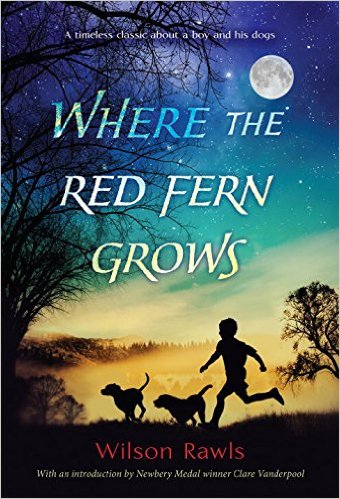“Where the Red Fern Grows” by Wilson Rawls is a heartwarming tale that transcends the barriers of age and time, beckoning readers into a world where love and resilience intertwine beautifully. This profound narrative dives deep into themes that resonate with the human spirit, allowing individuals to not only read a story but also to experience emotions that evoke nostalgia, longing, and profound respect for life’s simple yet profound moments.
Set against the backdrop of the Ozark Mountains during the Great Depression, the book chronicles the remarkable journey of a young boy named Billy Colman. From the moment he dreams of owning his own coonhounds, the narrative encapsulates the determination and fervor that characterize childhood aspirations. Readers can expect a vivid portrayal of adventure, woven seamlessly with the innocence of youth, as Billy works tirelessly to save money for his beloved dogs, Old Dan and Little Ann.
The narrative structure of “Where the Red Fern Grows” is both linear and captivating. It begins with Billy’s yearning and culminates in his heart-wrenching experiences that are laced with joy and sorrow. The story is punctuated by vivid imagery that transports readers to the rugged terrain of the Ozarks, where the wind whispers secrets, and the trees stand as silent witnesses to Billy’s journey.
One of the most compelling aspects of the book is its character development. Billy embodies the quintessential traits of loyalty, bravery, and determination. His relationship with his hounds is beautifully depicted, striking a chord with anyone who has ever shared a bond with an animal. Through the eyes of Billy, readers discover the palpable thrill of the chase, the bitter sting of loss, and the invaluable lessons that nature imparts. His character is not merely a vessel for the story; he is a reflection of the resilience found in human nature.
Old Dan and Little Ann are not just dogs; they are integral characters deserving of their own admiration and respect. Each dog possesses distinctive traits that contribute to the story’s richness. Old Dan, with his strength and tenacity, embodies the spirit of a warrior, while Little Ann showcases intelligence and agility. Their adventures encapsulate the essence of teamwork and loyalty, teaching readers about the beauty of companionship and the loyalty between a boy and his dogs that is unwavering, deeply spiritual, and transformative.
The emotional gravity of the book is palpable and resonates profoundly, especially in the latter half of the narrative. Rawls masterfully weaves moments of elation with deep-seated sorrow, creating a tapestry of emotions that ripple through readers’ hearts. As the story unfolds, it grapples with the inevitable cycle of life—loss and grief are unavoidable yet serve as catalysts for growth and understanding. The heart-wrenching scenes towards the conclusion of the story leave a lasting imprint, compelling readers to reflect on the fragility of life itself.
Thematically, “Where the Red Fern Grows” touches on several profound concepts. At its core, it is a narrative about perseverance, illustrating the lengths one will go for love and dedication. The interwoven philosophies of life and death reflect the cyclical nature of existence, inviting readers to embrace rather than fear this reality. Additionally, the theme of nature as both a nurturing and a harsh teacher resonates throughout the story. It emphasizes the importance of respecting wildlife while also learning from its challenges and beauty.
Moreover, the setting plays a pivotal role in enhancing the narrative’s ambiance. The Ozarks are depicted not merely as a backdrop but as a living, breathing entity that shapes the characters’ aspirations and actions. With rich, descriptive language, Rawls constructs an immersive environment that allows readers to palpably feel the chill of the night air, hear the rustling leaves, and sense the earthy aroma of the wilderness. This impact of the setting transports readers from the confines of their everyday lives into the heart of a young boy’s pioneering spirit.
In addition to its thematic richness, Rawls’ writing style captivates with its lyrical quality and heartfelt sincerity. His prose flows with a rhythmic cadence that mirrors the ebb and flow of the story itself, providing moments of reflection that prompt readers to pause, think, and feel deeply. This stylistic choice heightens the emotional stakes, ensuring that the story resonates on a personal level, encouraging introspection about one’s own experiences and relationships.
“Where the Red Fern Grows” is not merely a tale of adventure; it serves as an enduring reminder of the potency of dreams and the unwavering resolve required to pursue them. Readers who delve into this exquisite narrative can expect not just a story but an exploration of the emotional tapestry that binds us all as humans. Whether it sparks a nostalgic journey into one’s own childhood or engenders a newfound appreciation for the relationships we forge, this novel promises an experience that lingers long after the final pages are turned.
In conclusion, Wilson Rawls’ poignant exploration of love, loss, and determination in “Where the Red Fern Grows” remains relevant across generations. The nuanced characterization, breathtaking settings, and profound themes invite readers to not only engage with the text but to immerse themselves in an experience that entertains, enlightens, and evokes a sense of wonder about both the simplicity of a boy’s dream and the complexities of life itself. As readers close the book, they carry with them a sense of connection to Billy, his dogs, and the eternal truths that resonate within the heart’s deepest chambers.
